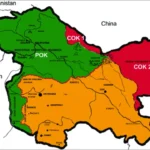Beijing, May 27, 2025 — China continues to expand its ambitious space exploration agenda with the Tianwen-2 mission, a landmark project aimed at asteroid sampling and deep-space research. Building on the success of its Tianwen-1 Mars mission, Tianwen-2 represents a significant leap in China’s efforts to explore small bodies in the solar system, marking its first venture into asteroid study and sample return.
Overview of Tianwen-2 Mission
Tianwen-2, named after the classical Chinese poem meaning “Questions to Heaven,” is designed to rendezvous with multiple asteroids, conduct detailed surveys, collect samples, and return them safely to Earth. The mission’s primary target is the near-Earth asteroid 469219 Kamoʻoalewa, a tiny celestial body about 40 to 60 meters in diameter, believed to be a fragment from the Moon or Earth’s surface.
In addition to Kamoʻoalewa, Tianwen-2 plans to visit a secondary target, a main-belt asteroid named Jiangxin-1, to conduct remote sensing and study its surface composition. This dual-asteroid mission aims to deepen scientific understanding of asteroid origins, solar system evolution, and potential resources for future space exploration.
Mission Objectives and Scientific Goals
The Tianwen-2 mission has several key objectives:
- Asteroid Sampling: To collect surface materials from Kamoʻoalewa and bring them back to Earth for laboratory analysis. These samples are expected to provide insights into the early solar system’s formation and the nature of near-Earth objects.
- In-situ Analysis: Conduct on-site measurements of the asteroid’s mineralogy, surface structure, and composition using advanced scientific instruments aboard the spacecraft.
- Multiple Target Exploration: Study the secondary asteroid Jiangxin-1 to compare its properties with Kamoʻoalewa, helping scientists understand the diversity and formation processes of asteroids.
- Technology Demonstration: Test China’s capabilities in complex deep-space navigation, asteroid rendezvous, sampling, and sample return technology.
Spacecraft and Mission Design
The Tianwen-2 spacecraft is equipped with state-of-the-art instruments, including spectrometers, cameras, and sampling devices. It utilizes ion propulsion technology for efficient long-distance travel between Earth and its asteroid targets.
The mission follows a phased approach:
- Launch and Cruise: After launch aboard a Long March 3B rocket from the Wenchang Space Launch Center, Tianwen-2 embarks on its journey toward Kamoʻoalewa.
- Asteroid Rendezvous and Survey: Upon arrival, the spacecraft will enter orbit around Kamoʻoalewa, conducting high-resolution mapping and surface analysis.
- Sample Retrieval: Tianwen-2 will utilize a robotic arm equipped with specialized tools to gather material directly from the surface of the asteroid.
- Secondary Target Flyby: The spacecraft will then navigate to Jiangxin-1 for additional scientific observations.
- Return to Earth: The sample capsule will detach from the spacecraft and re-enter Earth’s atmosphere, delivering the precious asteroid material for study.
Significance of the Mission
Tianwen-2 is China’s first asteroid sample-return mission and the country’s latest stride in establishing itself as a major player in planetary science. It complements global efforts by NASA’s OSIRIS-REx and Japan’s Hayabusa2 missions, both of which have returned asteroid samples or are in the process of doing so.
The mission not only advances scientific knowledge but also enhances China’s technical expertise in autonomous spacecraft operations, long-duration deep-space missions, and planetary sample handling.
Progress and Current Status
As of mid-2025, Tianwen-2 has completed its pre-launch testing phase and is undergoing final preparations for launch. China aims to send the spacecraft into space by late 2025 or early 2026, with an expected mission duration of several years to complete asteroid encounters and sample return.
Chinese space agencies continue to collaborate with international experts to analyze returned samples and share scientific findings, fostering global cooperation in space exploration.
Future Prospects and Broader Impact
Tianwen-2 lays the groundwork for more ambitious missions targeting asteroids and other small bodies in the solar system. These missions are crucial for understanding potential asteroid threats, mining opportunities, and the solar system’s history.
Additionally, China’s growing expertise in sample-return missions opens possibilities for future lunar and Martian sample returns, advancing humanity’s quest to unravel the mysteries of our cosmic neighborhood.
Conclusion
China’s Tianwen-2 mission marks a pivotal advancement in the nation’s space exploration capabilities. By targeting multiple asteroids and aiming to return samples to Earth, Tianwen-2 is set to contribute valuable knowledge about the building blocks of our solar system and demonstrate China’s commitment to deep-space research.





